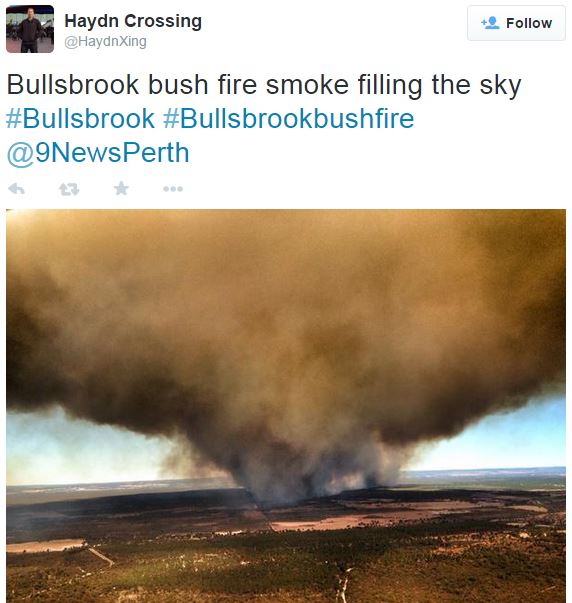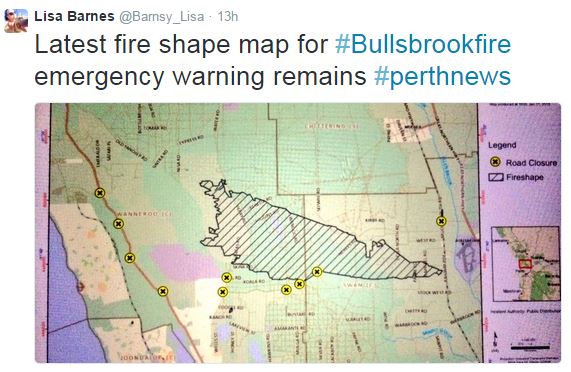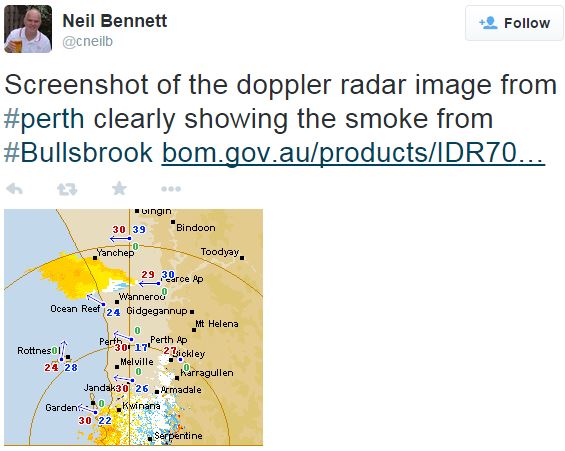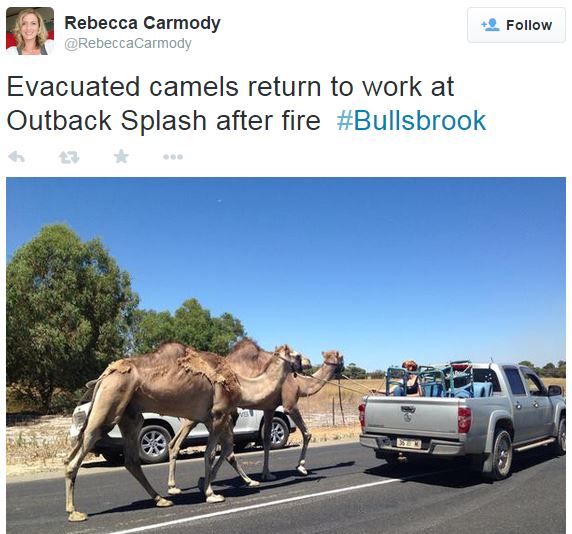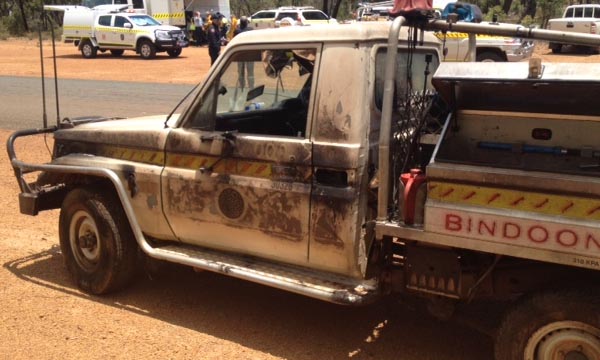Firefighters have stopped the spread of a fire that burned 16,300 acres (6,600 hectares) in Western Australia north of Perth. At one point the fire was described as having an 18-kilometer wide front.
Below is an excerpt from an article at Australia’s ABC news, published Sunday morning MST in the US:
A bushfire in the northern Perth suburb of Bullsbrook has been downgraded to a watch and act after firefighters controlled the blaze.
The fire was upgraded to an emergency warning on Sunday, after a wind change drove the blaze north-east, but at 9:00pm (AWST) the Department of Fire and Emergency (DFES) advised the fire was contained and stationary.
“Firefighters have been working very, very hard over night, strengthening containment lines – they’ve actually widened them considerably,” Mr Allen Gale, spokesman for WA’s DFES said.
“That’ll reduce the risk of fire hopping over into another area, particularly an area where there’s unburnt fuel.”
However, the fire is still not contained and remains a possible threat to lives and homes, the DFES said. Firefighters are expecting the wind to shift from south-westerly to easterly overnight, which means the fire may be moving in a westerly direction by morning.
Mr Gale confirmed it could be days before the fire is blacked out completely.
So far the fire has burnt 6,600 hectares of land and damaged two derelict homes and five sheds. On Sunday afternoon there was a risk the northern flank could become the new head of the fire and push north into suburbs including Chittering and Muchea, the Department of Fire and Emergency (DFES) said.
The video below shows a map of the fire from many different angles:

